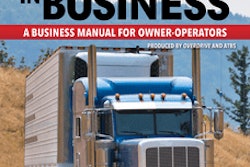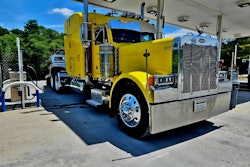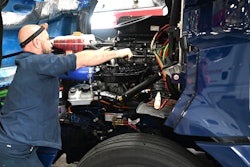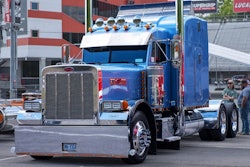If you're operating your truck in Canada, know that the nation's National Safety Code 11B in fact "does put a percentage" on the number of diodes that can be out before an LED lamp is in violation. That's according Commercial Vehicle Safety Alliance Roadside Inspection Specialist John Sova, who noted that "if 25% or more of the diodes are inoperative, the light would fail inspection" in the nation to our North.
As we made clear in the recent distillation of coverage of light-emitting-diode (LED) technology via our sister publication TPS last week, the current standard in the United States for such truck lights essentially carries forward the performance standards for other types of lights as well. In terms of enforcement here, as CVSA's Sova reiterated this week to me in response to questions, there is "no specific number or percentage of diodes that can be out before the light no longer meets the illumination requirements."
Those requirements are spelled out in Federal Motor Vehicle Safety Standard No. 108, specifying essentially "visibility of the light from the distance specified in the standard for a particular light," Sova said, distance and visibility differing for various required lights dependent on their position. For LEDs, Sova felt, "it gets quite complex when you start digging into it," suggesting Canada's standard simplifies a topic that is not nearly as simple as a number or percentage of diodes.

[Related: LED failures: How many individual diodes going dark will net a violation?]
"One light could have three or four of the diodes out and still meet visibility requirements," he said, "where another light may only have one or two diodes out and fail the visibility requirements."
Position of an individual diode itself might have a bigger impact on ultimate visibility of the light than another diode, too. "The importance of the position can also change between manufacturers," Sova noted. A lot of the research and testing that's been done is taking place with lighting manufacturers through the American Trucking Associations' Technology and Maintenance Council. "I believe they are are still working on trying to come up with a minimum baseline that would work across all manufacturers," Sova added.
What's required now? Look to the standards in FMVSS 108. And Sova's fellow inspection specialist Jeremy Disbrow echoed lighting manufacturers when he stressed this best practice, if you will:
When in doubt, default to replacement.
Speaking to Overdrive sister fleet publication CCJ back in May of 2024, Disbrow emphasized the current landscape for enforcement of the lighting regulations in the U.S., in addition to the notion that a light out or dimly shining is also a way truckers can easily self-select their truck for an inspection.
Most common inspection trigger? Yeah, that's lights, he said. "It's that low-hanging fruit. So if you're a trooper and you're sitting in the median watching traffic go by at 65 miles an hour, what are you going to be able to see at that speed? And it's the obvious stuff, right? So lighting that's out is always a real good flashing red light. It pulls your attention."
That could include a compromised LED assembly with whatever percentage of lights out, too, not just a light entirely out. It's one of the reasons that compliance consultant Jeff Davis memorably advised his own best practice when it comes to avoiding problems with inspections. Namely, that's to repeat this to yourself like a mantra so it fully sinks in:
Every light, burns every mile, every day.
(Except the ABS light on your trailer, of course, which must be out.)
[Related: Ways to avoid trouble at the scale house]
We might add diode to that mantra these days. Yet when it comes to illumination in the United States, CVSA's Disbrow said in that 2024 conversation with CCJ Editor Jason Cannon, "the only thing that is enforceable is ensuring that the LED lights, whether there's one or 10 [diodes] that are working, are visible from the required minimum distance under state and federal law. So I'm not talking a number of diodes, I'm talking about the visibility of those diodes. That's really the only thing we can enforce."
If he were a trucker himself, he said, he'd "replace them before they get that severe." That is, severe enough to draw attention or to fail the visibility standard. "From a liability and a safety standpoint, lights are extremely important for safety. They absolutely can cause collisions, especially the rear-facing lights, if a driver doesn't see them and goes underneath the vehicle."
The cost of replacing the lamp will be loads lighter than "what you're going to face in civil liability later after a collision," he added, if found to be negligent. "So this is just my opinion, but to me, a defense is not going to hold up in court if you say, 'Well, I still had two diodes working out of 20.' That's not going to get you anywhere in a civil lawsuit. So just from that standpoint, I suggest being cautious and err on the side of safety."
[Related: Stay ahead of the inspectors with maintenance topics in Overdrive]













